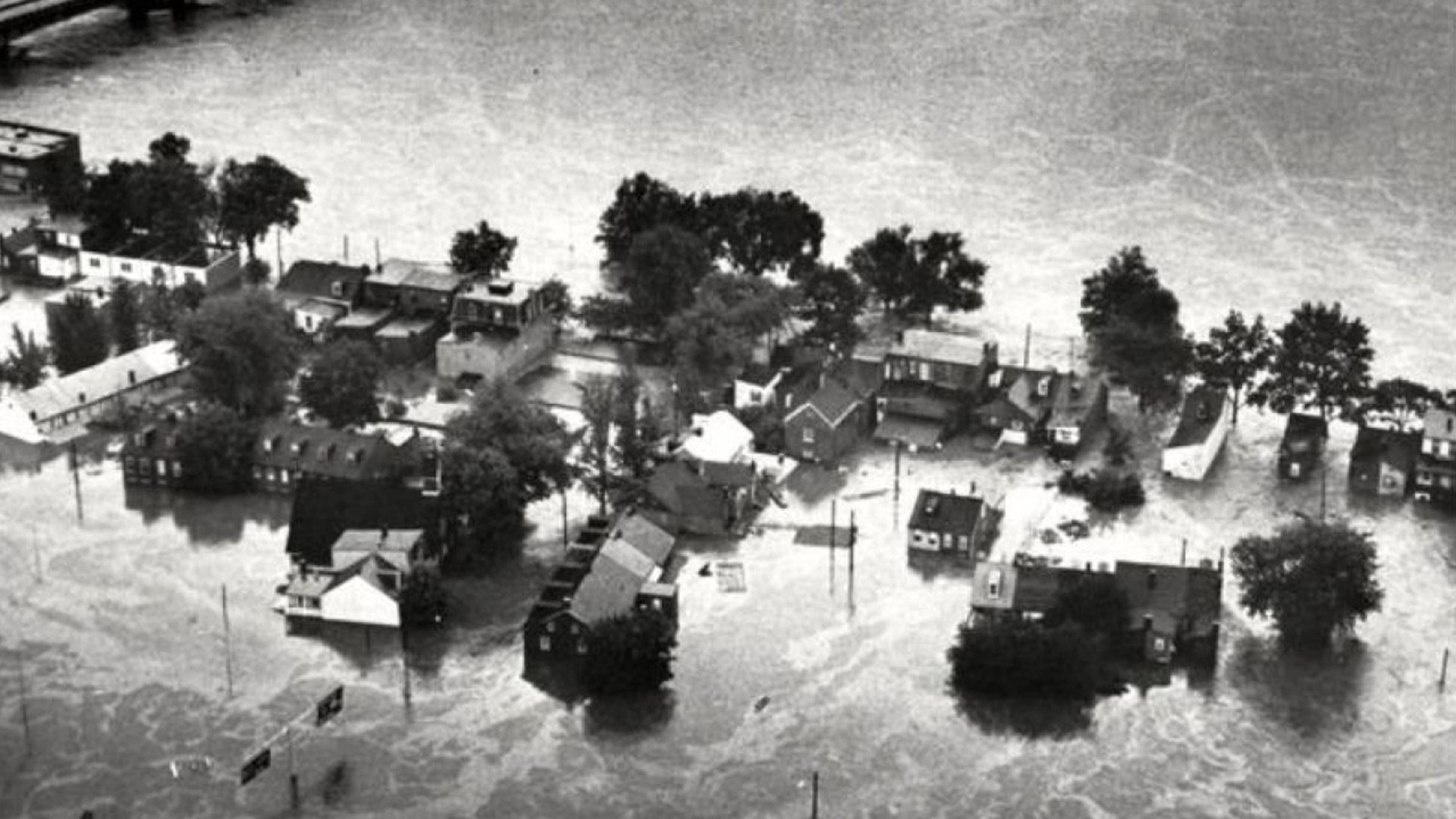LUZERNE COUNTY, Pa. — Imagine for a moment a flood where the water was so powerful that it caused cemeteries to give up their dead. Hundreds of them moved into unsuspecting neighborhoods where people had no idea the dead were returning. It would be like a scene from a horror movie. But unfortunately, this wasn't a movie: It was a tragic reality for some Pennsylvanians living along the Susquehanna River in the summer of 1972.
Hurricane Agnes, AKA "the big one," intensified over the Gulf of Mexico in mid-June 1972.
After making landfall across the southeast U.S, it began moving out to sea on June 21 before suddenly changing course and heading for our region on June 22.
The storm settled over Pennsylvania and upstate New York on June 23 as a tropical storm.
Agnes is remembered as the wettest tropical cyclone on record for Pennsylvania because parts of our region received up to 19" of rain. This caused flooding at a scale never seen before.
Even the president at the time, Richard Nixon, came to see the damage.
"This is the big one! You see a lot in the last two years, people ask how we are going to measure things, before COVID-19 and after COVID-19, before the pandemic, after the pandemic. Agnes completely changed the landscape physically. It changed the way certain areas were, and it changed the look of them," said Mark Riccetti at the Luzerne County Historical Society.
Thanks to Agnes, sections of the Wyoming Valley in the Wilkes-Barre area were washed away.
But it wasn't just here in northeastern Pennsylvania. Our state capital of Harrisburg fared a little better than the Wyoming Valley, but the devastation in certain parts of the city was total, including places like Shipoke, where residents were living on the lowest flood plain in the entire city. That section was destroyed. The Cameron Street corridor was inundated with water thanks to Agnes and Paxton Creek.
Also, northern Harrisburg, where many homes were flooded, including the governor's mansion, was not spared.
The northern branch of the Susquehanna River in Wilkes-Barre was particularly brutal.
"Surely, if there was a flood, the water wouldn't come over the railroad tracks in Swoyersville. It would have to stop there. Before that happened, my dad and I rode down to the corner of Denison and Wyoming Avenue, and we saw the caskets floating down." Kris Kotch recalled.
Can you imagine having to wade through flood water containing hundreds of corpses? The brave people of the Wyoming Valley did just that and had to make the decision on what to do with them.
"They collected them. Of course, there was no way to identify them, and a lot of the tombstones had been destroyed or swept away," Riccetti said. "They were all buried in a mass grave, and a there's a monument to them.
See more stories about the Agnes Flood on YouTube.

